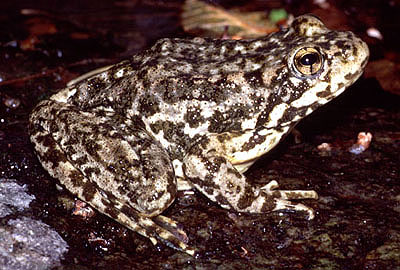Facts About Mountain yellow-legged frog
The mountain yellow-legged frog, also known as the southern mountain yellow-legged frog, is a fascinating species endemic to California, USA. This true frog inhabits various mountain ranges in Southern California and the Southern Sierra Nevada. Unfortunately, it is currently listed as endangered.
Scientifically named Rana muscosa, these frogs are relatively small, measuring between 4 and 8.9 centimeters. Their coloration varies, often appearing yellowish, brownish, or olive with black and brown markings. A unique characteristic of these frogs is their defensive odor, which resembles the scent of garlic when they are handled. They prefer sunny areas near water and are commonly found in mountain creeks, lakes, streams, and pools. The tadpoles require permanent water for at least two years to develop fully.
Breeding season commences after the snow melts, typically between March and May in the southern regions, extending up to July at higher elevations. Interestingly, these frogs lack a vocal sac and make a raspy call underwater. Their diet mainly consists of insects and other small invertebrates.
The mountain yellow-legged frog is facing significant challenges. It is considered endangered under the US Endangered Species Act and by the International Union for Conservation of Nature. Over the past century, 90% of their populations have been decimated due to various threats, including introduced fish species, pesticides, the chytrid fungus, drought, and ultraviolet radiation.
To combat this decline, several conservation efforts are underway. Institutions such as the San Diego Zoo, the Arnold and Mabel Beckman Center for Conservation Research, and the Oakland Zoo are running captive breeding programs. These initiatives aim to breed and release frogs and tadpoles back into their natural habitats to boost population numbers. However, the frog's susceptibility to chytridiomycosis, a deadly fungal disease, remains a significant hurdle.

 Mexico
Mexico